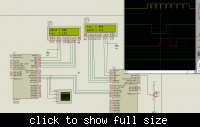maiyeu512
Newbie level 1
Referring to previous thread https://www.edaboard.com/threads/261292/
Please! I want your code full

Code:Master //////////////////////////////////////////// unsigned int spi_write_hw(unsigned char val) { unsigned char ctrl; SS=0; SSPBUF=val; while(!SSPIF); while(!BF); ctrl=SSPBUF; SS=1; return ctrl; }
Code:slave ////////////////////////////////// void interrupt isr() { if(SSPIF) { SSPIF=0; rcv=SSPBUF; SSPBUF=snd; } }
Please! I want your code full
Last edited by a moderator: